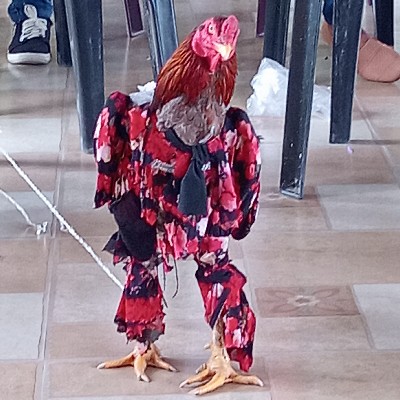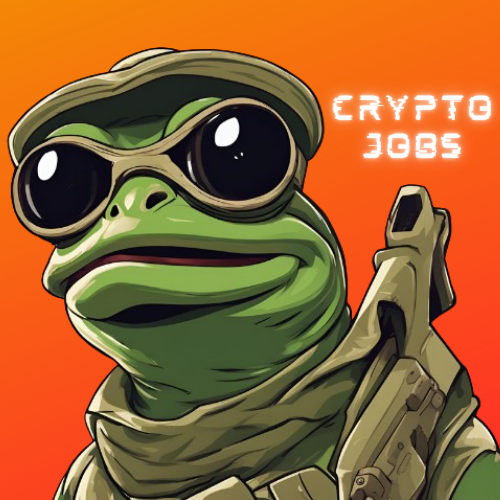
ORDI priceORDI
ORDI/USD price calculator
ORDI market Info
Live ORDI price today in USD
Crypto Market Heats Up: Major Developments Across Bitcoin, Ethereum, DeFi, and NFTs on September 19, 2025
The global cryptocurrency market is buzzing with significant activity today, September 19, 2025, as key sectors experience notable shifts in price action, regulatory clarity, and technological advancements. While the overall market capitalization hovers around the $4.07 trillion mark with a slight dip of 0.66% over the last 24 hours, the underlying narratives suggest a dynamic landscape for digital assets. [1, 23]
Bitcoin Navigates Resistance Amidst Positive Sentiment
Bitcoin (BTC) is trading in a tight range, generally between $116,000 and $117,000, showing minor fluctuations after an earlier push. [3, 6] Despite some downward pressure throughout the day, BTC has demonstrated resilience, with year-to-date gains exceeding 23%, signaling a departure from its historically bearish September trends. [7] This robust performance is attributed to decreasing selling pressure, heightened public interest, and growing governmental support, notably with Michigan advancing a bill to allocate up to 10% of its state reserves into crypto, potentially setting a precedent for broader institutional adoption across the U.S. [3, 7, 23]
Analysts are keenly watching key resistance levels between $117,200 and $119,000, with an eye on the $110,000 level acting as a liquidity magnet. [14] While some forecasts suggest a potential rally towards $120,000, others anticipate further consolidation. [8, 14, 21] Major trading platforms, such as Bitget, provide real-time data reflecting these market dynamics.
Ethereum Ecosystem Advances with Fusaka Upgrade and Scaling Solutions
Ethereum (ETH) is also experiencing moderate movements, trading around $4,500, with a slight dip of 1.12% to 2.34% over the past 24 hours. [3, 23, 28, 30] The Ethereum ecosystem is poised for a significant transformation with the anticipated 'Fusaka upgrade,' scheduled for mainnet activation on December 3. This upgrade aims to enhance network efficiency, scale throughput, and reduce transaction costs through innovations like PeerDAS and phased blob expansion. [1, 9] Testnet deployments are currently underway in October. [9]
Further solidifying its scaling efforts, Optimism’s Superchain Upgrade 16a is being deployed. This maintenance-focused enhancement is designed to improve blockchain flexibility and safety, supporting the broader expansion of Ethereum's Layer-2 network. [26] Meanwhile, industry figures like Vitalik Buterin continue to shape the dialogue around Ethereum's future, recently criticizing certain state expiry proposals and advocating for alternative solutions like optional partial nodes to address scalability challenges. [27]
DeFi Innovation and Institutional Inflow Drive Growth
The Decentralized Finance (DeFi) sector remains a hotbed of innovation and capital flow. The Total Value Locked (TVL) in DeFi protocols saw a modest increase of 0.04% today, with established players like Aave continuing to lead. [23] A significant partnership between Galaxy, a prominent trading platform, and Aave aims to redefine liquidity management in DeFi, signaling increased institutional engagement within the space. [15]
Stablecoins are also making headlines. PayPal’s PYUSD has significantly expanded its reach by integrating with LayerZero, making it available across nine additional blockchain networks. [13] Concurrently, YZi Labs, linked to Binance, has substantially increased its investment in Ethena Labs, creator of the USDe synthetic dollar, as USDe's supply surpasses $14 billion, driving its integration into centralized and decentralized platforms. [12] The XRP Ledger (XRPL) is also witnessing burgeoning DeFi adoption, with over 14.1 million XRP locked in Automated Market Maker (AMM) pools, fueled by compliance-focused infrastructure and the tokenization of real-world assets (RWAs). [18]
NFTs Pivot Towards Utility and Strong Performance
After a period of consolidation, the NFT market is showing renewed vigor, with overall sales volume surging by 6.64% today. [23] A standout performer is the TON-based NFT ecosystem, which is seeing daily transaction volumes between $3 million and $9 million, defying broader market trends. [20] This surge is largely driven by Telegram's vast user base and the integration of utility-focused NFTs within its ecosystem. [20]
Pudgy Penguins (PENGU) continue to command attention, with a market cap exceeding $2.18 billion. [25] Its success is underpinned by strong on-chain sentiment, successful e-commerce and gaming integrations, and strategic partnerships, illustrating a market shift towards utility-driven digital collectibles. [25, 29] This trend suggests that NFTs are evolving beyond speculative assets into functional tools with real-world applications and corporate integrations, carving out a new space in the digital economy. [29]
Regulatory Frameworks Take Shape Globally
The regulatory landscape for crypto assets is becoming increasingly defined across major jurisdictions. In the UK, the Financial Conduct Authority (FCA) has launched a consultation (CP25/25) to apply its comprehensive handbook standards to cryptoasset activities, aiming for consistency with traditional financial services. [10] Similarly, European regulators from France, Austria, and Italy are advocating for enhanced supervision, proposing stricter rules for global platforms and a centralized approach to scrutinizing token offerings. [11]
In the U.S., significant discussions are underway. Banks are pressing the SEC to implement robust safeguards for crypto custody rules, emphasizing the need for rigorous standards for crypto firms. [16] Concurrently, the SEC has introduced new listing rules for crypto Exchange-Traded Products (ETPs), providing clearer guidelines and aiming to streamline product launches. [17] These developments underscore a global movement towards establishing clearer, more harmonized regulatory environments for the burgeoning digital asset market. [22]
Today's crypto market demonstrates a blend of steady progress in core technologies, burgeoning innovation in DeFi and NFTs, and a continuing global effort to establish clear regulatory guidelines, setting the stage for future growth and mainstream adoption.
Do you think the price of ORDI will rise or fall today?
Now that you know the price of ORDI today, here's what else you can explore:
How to buy ORDI (ORDI)?How to sell ORDI (ORDI)?What is ORDI (ORDI)What would have happened if you had bought ORDI (ORDI)?What is the ORDI (ORDI) price prediction for this year, 2030, and 2050?Where can I download ORDI (ORDI) historical price data?What are the prices of similar cryptocurrencies today?Want to get cryptocurrencies instantly?
Buy cryptocurrencies directly with a credit card.Trade various cryptocurrencies on the spot platform for arbitrage.ORDI price prediction
When is a good time to buy ORDI? Should I buy or sell ORDI now?
About ORDI (ORDI)
What Is Ordinals?
Ordinals is a groundbreaking system that introduces a novel way of attaching arbitrary assets to satoshis, the smallest unit of Bitcoin. This innovative approach allows for the creation of NFTs (Non-Fungible Tokens) directly on the Bitcoin network. Unlike traditional NFT platforms that require separate tokens or changes to the blockchain, Ordinals seamlessly integrates within the existing Bitcoin infrastructure. Launched in January 2023, the introduction of Ordinals has led to a significant surge in Bitcoin transactions, resulting in network congestion and a notable rise in gas fees.
The essence of Ordinals lies in its ability to operate with inscriptions written on the Bitcoin blockchain. Through the ORDI protocol, diverse forms of information, including text, images, sound, and video, can be inscribed onto a satoshi. Given that Bitcoin comprises 2.1 quadrillion satoshis, the Ordinals protocol unlocks a plethora of new use cases, particularly in the realm of NFTs and tokens.
Resources
Official Documents: https://docs.ordinals.com/
Official Website: https://ordinals.com/
How Does Ordinals Work?
Ordinals in Bitcoin are a way of giving unique numbers to individual satoshis based on the order they are created. It's like giving each satoshi its own special ID. When satoshis are moved from one place to another, their order is maintained, just like a "first-in, first-out" system. These ordinal numbers are not officially recognized by the Bitcoin system itself, but they are important to a community of Bitcoin enthusiasts who find value in them.
Inscriptions are like additional information or pictures attached to these ordinal numbers. They are stored within the transaction data of Bitcoin. To create an ordinal NFT, people send a transaction for a specific satoshi and attach the desired information. It's like adding a special message or image to that satoshi. Unlike traditional NFTs on other platforms, ordinals can be treated as either fungible or non-fungible, depending on the owner. Regular ordinals can be used for regular Bitcoin transactions, but the attached information stays with them. On the other hand, NFTs on other networks, such as Ethereum, are different from fungible tokens and are treated separately.
What Is ORDI Token?
ORDI is the utility token of the Ordinals ecosystem. Each ORDI token corresponds to one satoshi upon its creation. The subsequent value of an ORDI token lies in its attributes, demand, and rarity. With a total supply and circulating supply capped at 21,000,000, ORDI tokens represent a finite resource in the ever-evolving world of cryptocurrency.
What Determines Ordinals's Price?
In the dynamic world of cryptocurrency and blockchain, the price of a digital asset like Ordinals is influenced by a myriad of factors. At its core, the law of supply and demand plays a pivotal role in determining the price of Ordinals. Given that ORDI tokens have a capped supply, their scarcity can drive up demand, especially if the utility and adoption of the Ordinals system gain traction within the blockchain community. As more users recognize the value of creating NFTs on the Bitcoin network using Ordinals, the demand for ORDI tokens can surge, positively impacting their price.
External market conditions also wield significant influence over Ordinals's price. News, regulatory changes, technological advancements, and broader market sentiment can lead to price fluctuations. For instance, positive news about Ordinals or endorsements from influential figures in the crypto space can lead to increased buying pressure. Conversely, regulatory challenges or competition from similar projects can exert downward pressure on its price. Furthermore, the overall health and sentiment of the cryptocurrency market, often led by major players like Bitcoin and Ethereum, can indirectly sway the price trajectory of ORDI tokens.
Bitget Insights




ORDI/USD price calculator
ORDI resources
Tags:
What can you do with cryptos like ORDI (ORDI)?
Deposit easily and withdraw quicklyBuy to grow, sell to profitTrade spot for arbitrageTrade futures for high risk and high returnEarn passive income with stable interest ratesTransfer assets with your Web3 walletWhat is ORDI and how does ORDI work?
Global ORDI prices
Buy more
FAQ
What is the current price of ORDI?
What is the 24 hour trading volume of ORDI?
What is the all-time high of ORDI?
Can I buy ORDI on Bitget?
Can I get a steady income from investing in ORDI?
Where can I buy ORDI with the lowest fee?
Related cryptocurrency prices
Prices of newly listed coins on Bitget
Hot promotions
Where can I buy ORDI (ORDI)?
Video section — quick verification, quick trading









